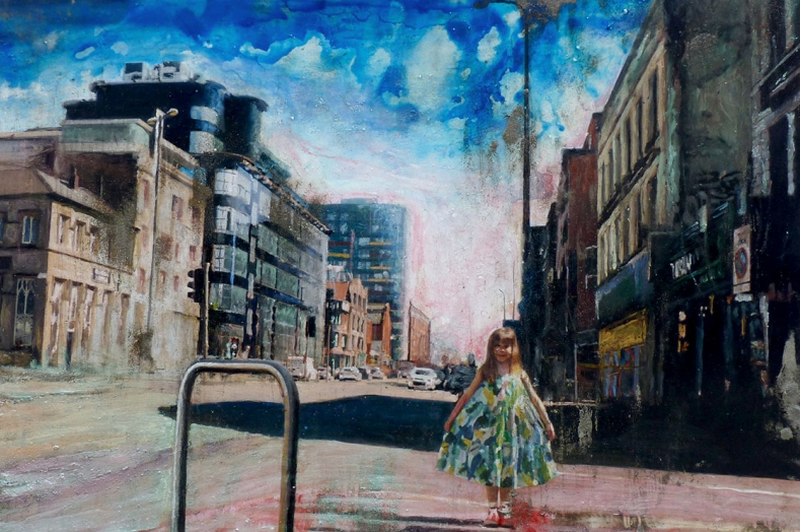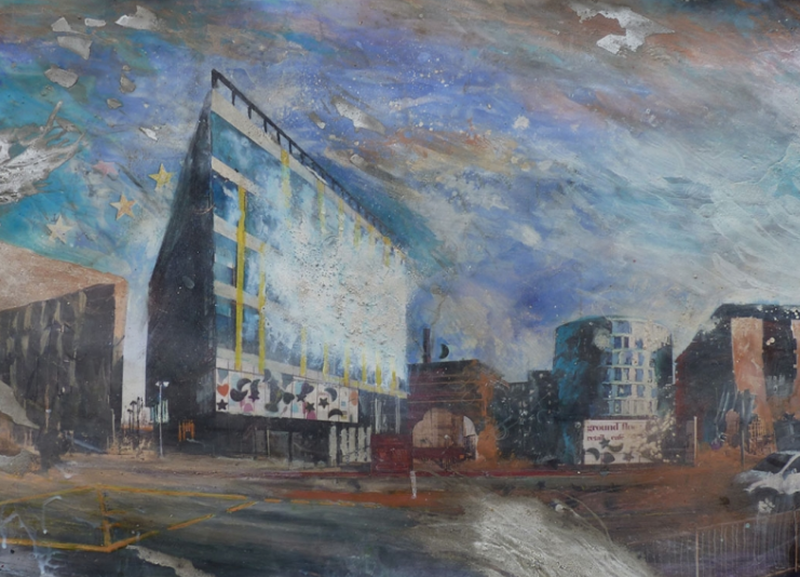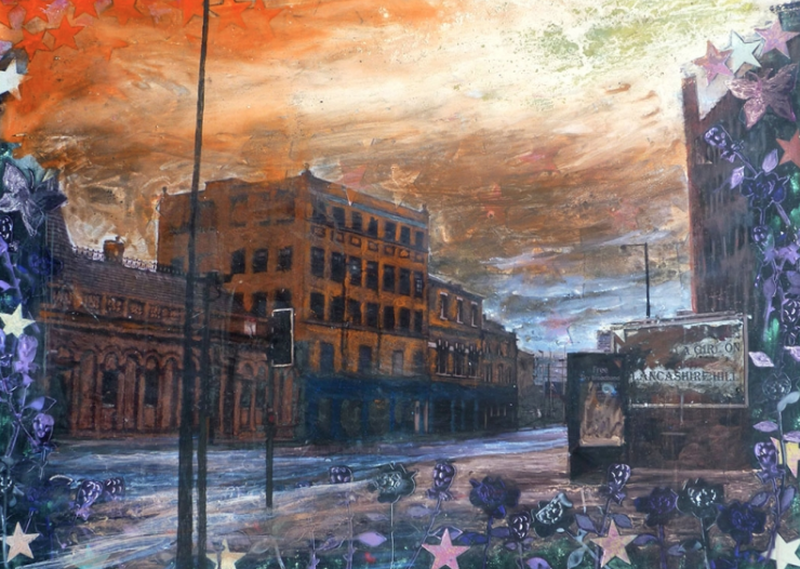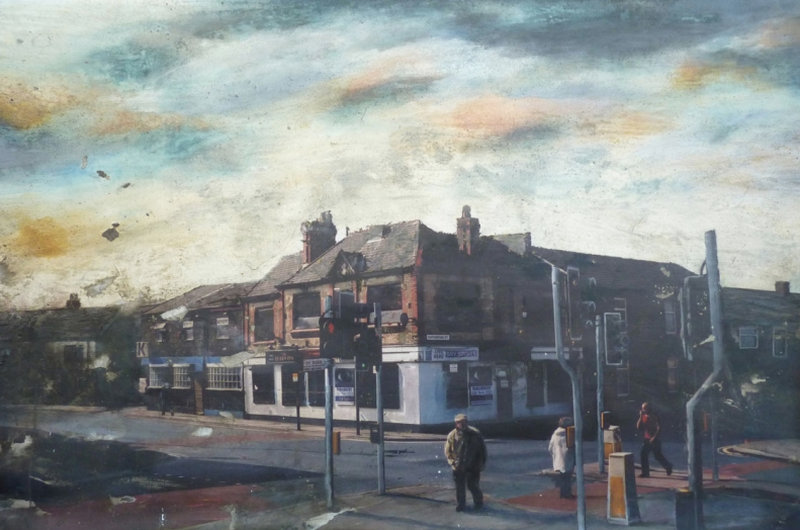After twenty years across the Channel, one artist’s rekindled a romance with his native North West
There’s a whiff of Salvador Dalí about Tim Garner - an air of bohemian, despite the suit and tie, and of course a spiffing moustache.
“I did actually try and grow it like Dalí,” he chuckles, “but it kept getting flattened on one side when I slept on it.”
Yet while Garner does share similarities with the flamboyant Catalan surrealist (including some eccentric life experiences) in many ways he couldn’t be more different. For a start, he’s extremely grounded, with the same lack of pretence as his signature northern cityscapes.
Despite spending twenty years in Paris, financial constraints forced the Charlesworth-born artist to move back to the UK fifteen years ago and he’s been charting Manchester’s changing landscape ever since. While he’s now achieved considerable renown and earns a small living, it’s not been an easy ride.

Garner first started using art as outlet when experiencing learning difficulties at school - ‘before there were labels like dyslexia’ - and met a French girl while studying for an art BA. Eloping to Paris, he embarked on a twenty-year struggle to combine a living with his artistic pursuits; starting with makeshift studios in several notorious Parisian squats (one later shut down by the CRS) and encountering everyone from call girls to far left activists.
Somewhere amongst all this, he managed to piss off a few Breton villagers too
A dissolved relationship and a near brush with success at a major gallery next led Garner to a Brittany slaughterhouse, inspiring several confrontational works spanning several metres - 'I think people thought I was deeply deranged!’ - and creating work for a trail of seven chapels throughout the region (including a gigantic triptych).
Somewhere amongst all this, he managed to piss off a few Breton villagers too. Quite a story.

Now, as the father of two French children, he divides his time between Paris and his north English homeland. Places that sound like a contrast but which Garner maintains have many similarities.
“The atmosphere and the light are different but Manchester, like Paris, was built by working men and women. And like all cities, they’re both a little rough around the edges.”
So what does he think about the pace of development here? “I think Manchester is a great city with a great history, and that change is very positive. When I used to visit as a child to buy records, a lot of the city was wasteland. It’s good to see the melange of old and new.”

Nowadays, Garner is arguably one of the region’s leading artists; renowned for what Guardian critic Joe Turnbull called “haunting amalgams…both an ode and a lilting lament” to Manchester, its “blemishes and beauty.”
While he agrees that cityscapes and landscapes can be a little passé, Garner has managed to create an aesthetic that’s very unique and entirely his own. So what is it that draws him to the genre?
Optimistic yet decaying in parts - much like Manchester itself
“I like showing that cityscapes can be avant-garde, radical, dynamic,” he says. “But also, it’s about the simple things, community and identity. I like the honesty of what I paint.”
Honesty is an important quality for Garner. He tells me that he’s inspired by artists from the late Medieval/early Renaissance period - Frangelico, Giotto - deeply religious men who used art with conviction.
“Once you get to the likes of Michelangelo and Titian, it’s all one-upmanship; a load of men bitching about each other and competing for wealthy patrons. I don’t like art for ego’s sake.”

Garner creates his eye-catching pieces with a complex combination of painting and photography; the latter shot on film and collaged.
“I like the factual nature of photography, the immediacy, but it’s not enough. Paint is more emotional.”
Especially of late, paint is the main factor, and one that constantly evolves. Garner’s current preference is iridescent products, lending his pieces a slight metallic sheen at odds with their gritty edge. For the latter, he uses everything from concrete to metal and debris; scraping off layers and re-adding them in an intense process which can take anywhere from ten days to three weeks.
Typically nonconformist, now and then he’ll even add a border of sparkly stars or flowers; particularly incongruous in works portraying the ‘anti-landmarks’ - car parks, takeaways, nondescript streets - he often favours. Fixed with adhesive and layers of varnish, the result is a hazy detachment from reality that’s at once both familiar and surreal.
Optimistic yet decaying in parts - much like Manchester itself.
As Turnbull pointed out, “in every generation there will be a handful of artists who can capture the Zeitgeist of their time.” Tim Garner is undoubtedly one of them.
Find out more about Tim Garner here.














